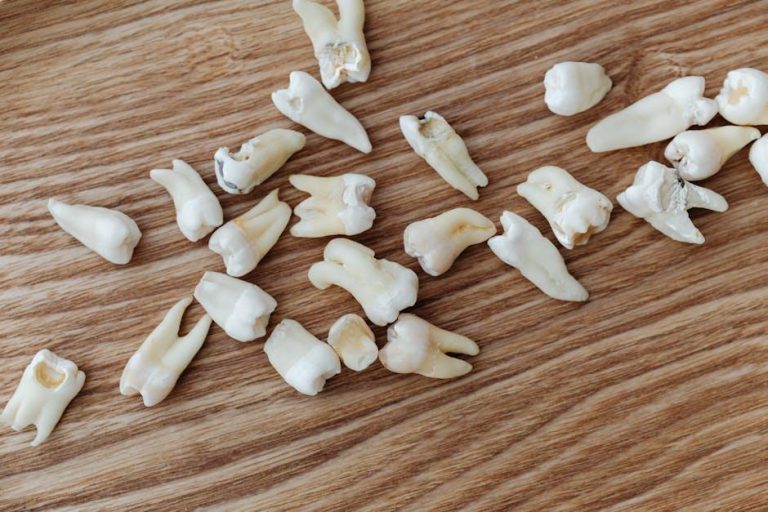
2020 to 2022 Saw Nearly 2 Million Annual Emergency Room Visits for Dental Issues – U.S. News & World Report
Between 2020 and 2022, the United States witnessed a staggering influx of nearly 2 million annual emergency room (ER) visits related to dental issues, according to a recent report by U.S. News & World Report. This alarming statistic highlights a growing problem in dental health management across the country. But why are so many people turning to emergency rooms for dental problems? What are the underlying causes, and how can these visits be prevented?
Understanding the Surge in Dental-Related ER Visits
Emergency rooms are designed to handle urgent, life-threatening conditions, but dental issues often account for a substantial portion of non-trauma visits. The period from 2020 to 2022 was marked by unprecedented challenges, including the COVID-19 pandemic, which impacted access to routine dental care across the country. These factors, among others, contributed to the spike in emergency room visits for dental problems.
Key Reasons Behind Increased ER Visits for Dental Care
- Pandemic-related dental care disruptions: Many dental clinics temporarily closed or limited appointments during lockdowns, delaying preventive and routine treatments.
- Lack of dental insurance: Millions of Americans remain uninsured or underinsured for dental care, pushing them to seek ER care, which is often seen as a last resort.
- Oral health neglect and worsening conditions: Poor oral hygiene, diet, and lack of preventive care can cause tooth decay and infections leading to painful emergencies.
- Limited access to urgent dental care: In some regions, especially rural areas, immediate dental treatment clinics may be scarce, again shifting the burden to ERs.
Most Common Dental Issues Leading to ER Visits
Understanding the types of dental problems that frequently drive people to hospital emergency rooms can help target preventive strategies effectively.
| Dental Issue | Typical Symptoms | Why ER Visit Happens |
|---|---|---|
| Tooth Abscess | Severe toothache, swelling, fever | Infection untreated, causing systemic symptoms |
| Severe Toothache | Sharp, persistent pain | Unmanageable at home, no dentist available |
| Broken or Knocked-out Tooth | Visible damage, pain, bleeding | Trauma requiring immediate dental intervention |
| Gum Infections (Periodontitis) | Swollen gums, bleeding, bad breath | Advanced infection causing pain or potential spread |
| Oral Trauma and Injuries | Cuts, bleeding, broken jaw | Accidents necessitating emergency care |
The Impact of ER Visits for Dental Problems
Seeking emergency care for dental issues is costly, often ineffective for long-term treatment, and puts additional strain on hospital resources. Emergency rooms typically do not have dental specialists on staff, meaning many patients only receive temporary relief such as painkillers or antibiotics. This cycle can result in unresolved dental problems, repeated ER visits, and worsening health outcomes.
Costs and Healthcare System Burden
- Higher expenses: ER dental visits are usually more expensive than routine dental visits or urgent care clinics designed for dental emergencies.
- Band-aid solutions: ER doctors provide temporary care but cannot perform definitive dental treatments like root canals or extractions.
- Overcrowding and resource diversion: ER visits for dental issues add pressure on emergency services, especially in busy urban hospitals.
Practical Tips to Avoid Emergency Room Visits for Dental Issues
Taking care of your oral health and knowing how to respond to dental problems can help significantly reduce the need for emergency room visits.
Maintain Regular Dental Care
- Visit your dentist twice a year for check-ups and cleanings.
- Address cavities, gum disease, or dental pain early before complications occur.
Practice Good Oral Hygiene
- Brush at least twice daily with fluoride toothpaste.
- Floss daily to remove plaque buildup between teeth.
- Limit sugary snacks and drinks that contribute to tooth decay.
Know When to Seek Urgent Dental Care
- Contact your dentist immediately if you experience severe tooth pain, swelling, or injury.
- Locate nearby urgent dental clinics or after-hours dental services in your area.
- Use the emergency room only for life-threatening dental conditions involving uncontrolled bleeding, severe swelling, or trauma to the face and jaw.
Case Study: How Timely Dental Care Prevented ER Visits
Sarah’s Story: During the pandemic, Sarah postponed her regular dental check-up due to fears of COVID-19 exposure. Within months, she developed a painful tooth abscess. Instead of heading to the ER, she contacted her dentist’s emergency hotline and received prompt antibiotics and treatment planning. Thanks to timely care, Sarah avoided an ER visit and an extended hospital stay.
Conclusion
From 2020 to 2022, the U.S.’s nearly 2 million annual emergency room visits for dental issues shed light on crucial gaps in dental care access and education. By understanding the root causes of these dental emergencies and adopting preventive oral health habits, individuals can protect their smiles and reduce unnecessary ER visits. Regular dental check-ups, good hygiene, and awareness about when and where to seek urgent dental care are vital steps toward better oral health outcomes and less strain on emergency services nationwide.
Remember, your mouth is a window to your overall health — keeping it healthy can save you time, money, and discomfort. If in doubt, always reach out to a dental professional rather than going straight to the ER.


